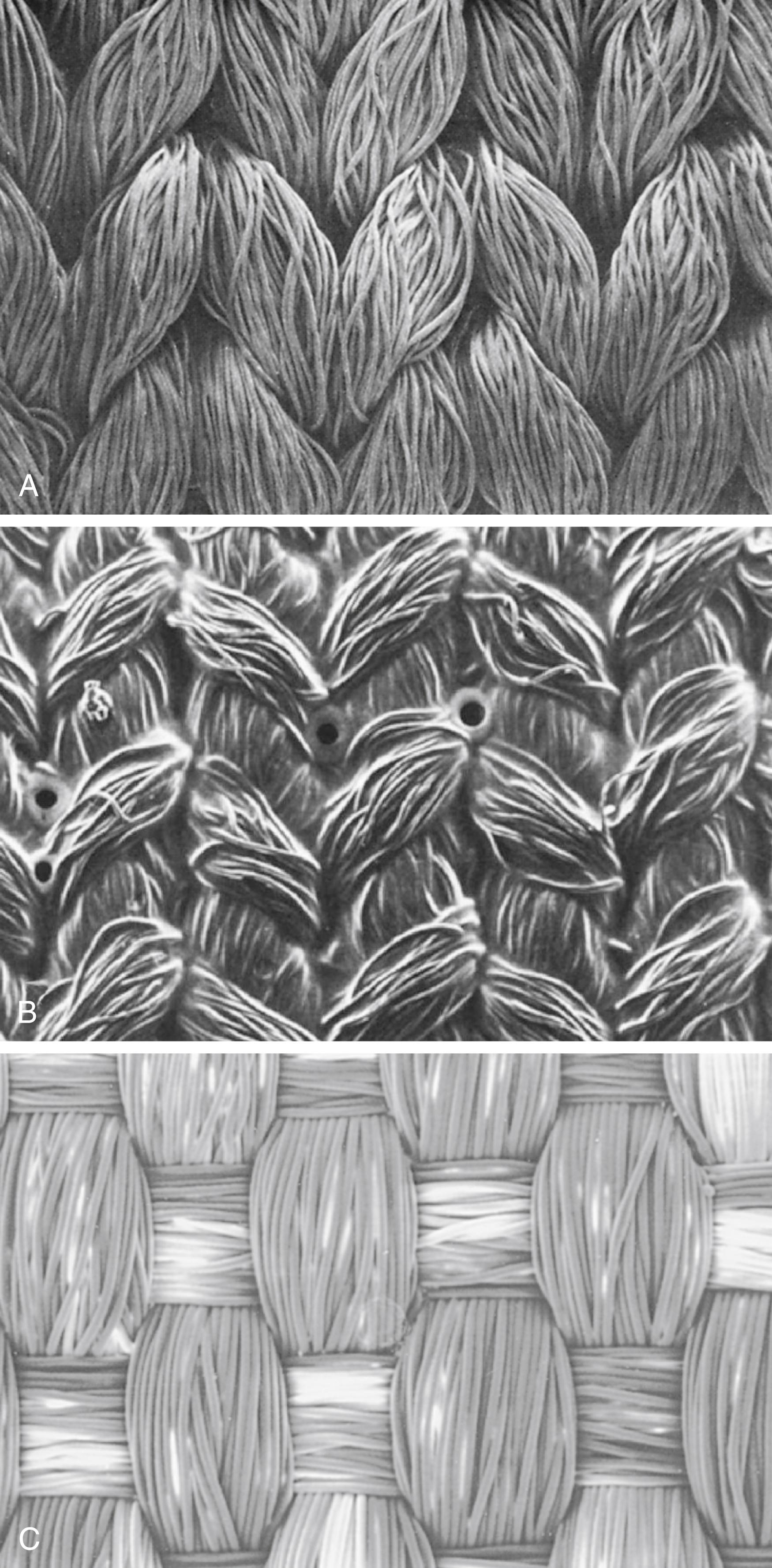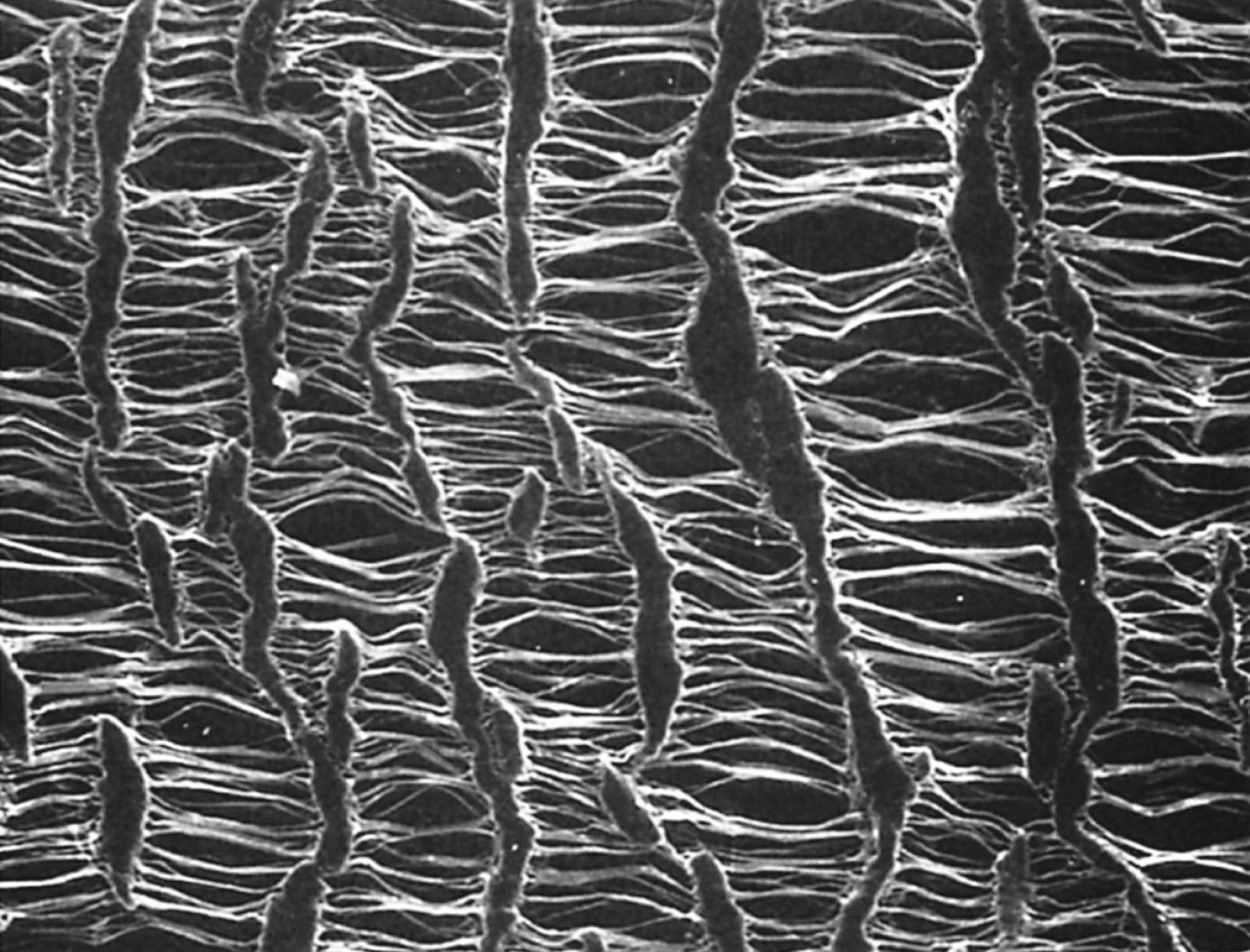Physical Address
304 North Cardinal St.
Dorchester Center, MA 02124
Arthur Voorhees and colleagues first described the use of a prosthetic graft to bridge arterial defects in 1952. Since then, numerous advances have been made in fabric technologies, and a large variety of prosthetic grafts are currently available on the market. Currently, vascular surgeons use prosthetic grafts for several different indications, including aortic aneurysm repair, arterial bypass in the upper and lower extremities, and dialysis access creation.
Prosthetic grafts can play an important role in the management of vascular disease for those patients who do not have adequate autogenous conduit. Although surgical bypass with autogenous vein has a well-established record with documented long-term patency rates, a growing proportion of patients needing bypass surgery lack suitable autogenous venous conduit. , Reasons for this include previous harvesting of the veins for coronary artery bypass or prior lower extremity revascularization procedures, small vein caliber, active infection at the vein harvest site, and vein varicosities or thrombosis.
The advent of endovascular technology has resulted in a corresponding reduction in the number of surgical bypasses performed in patients with arterial occlusive disease, with a concomitant increase in the complexity of patients that do require bypass such as the scenario of failed endovascular intervention. As such, lower extremity bypass with a prosthetic conduit continues to serve as a therapeutic choice in the revascularization of patients with limb ischemia.
The ideal prosthetic conduit would be impermeable, compliant, biocompatible, durable, easy to sterilize, facile to implant, available in different sizes, resistant to thrombosis and infection, and cost-effective. Properties such as surface electronegativity, graft porosity, endothelial seeding, and heparin bonding have all been evaluated for their potential to improve graft function. Electronegativity on the graft surface plays a role in the inhibition of platelet aggregation with theoretic enhancement of this property by carbon coating of the luminal surface of the graft. Graft porosity has not been shown to significantly affect the rate of graft thrombosis but may be implicated in tissue ingrowth. Currently, the most commonly used prosthetic materials for revascularization surgery are Dacron and expanded polytetrafluoroethylene (ePTFE), although there are several commercially available graft materials ( Table 66.1 ).
| Material Type | Company | Product | Description |
|---|---|---|---|
| Standard | |||
| ePTFE | Angiotech/Edwards Life Sciences (Irvine, CA) | Lifespan | Re-enforced |
| Atrium Medical Corporation (Hudson, NH) | Advanta VXT | Softwrap technology | |
| Advanta SST | Trilaminate, allows pulsation | ||
| Advanta VS | 60/20-μm through-pore design | ||
| Flixene | Laminated with biomaterial film | ||
| Bard Peripheral Vascular, Inc. (Tempe, AZ) | Impra CenterFlex | Unmodified | |
| Boston Scientific (Natick, MA) | Exxcel Soft Vascular Graft | Unmodified | |
| B. Braun (Melsungen, Germany) | VascuGraft | Unmodified | |
| Vascutek, Ltd. (Renfrewshire, United Kingdom) | Maxiflo Ultrathin | Thin wall, external ePTFE wrap | |
| Maxiflo Wrap | Regular wall, external ePTFE wrap | ||
| W.L. Gore & Associates Inc. (Flagstaff, AZ) | Gore-Tex | Unmodified | |
| Gore-Tex Stretch | Stretch | ||
| Gore Intering | Unibody, intrawall radially supported | ||
| Dacron | Braun | Protegraft | Knitted, double velour |
| InterVascular, Inc. (Mahwah, NJ) | InterGard Ultrathin | Unmodified | |
| Vascutek, Ltd. | VP1200K | Unmodified | |
| Sealed | |||
| ePTFE | Vascutek, Ltd. | SealPTFE Ultrathin | Gelatin sealed, thin wall |
| SealPTFE Wrap | Gelatin sealed, regular wall | ||
| Taperflo | Gelatin sealed, tapered | ||
| Dacron | Atrium Medical Corporation | Ultramax | Knitted, gelatin sealed, double velour |
| Bard Peripheral Vascular, Inc. | Vasculour II | Knitted, albumin sealed | |
| Boston Scientific | Hemashield Gold Microvel | Knitted, collagen sealed, double velour | |
| Hemashield Platinum | Woven, collagen sealed | ||
| B. Braun | UniGraft | Woven, gelatin sealed, single/double velour | |
| InterVascular, Inc. | InterGard Woven | Woven, collagen coated | |
| InterGard Knitted | Knitted, collagen coated | ||
| Vascutek, Ltd. | Gelseal | Knitted, gelatin sealed | |
| Gelsoft | Knitted, gelatin sealed | ||
| Gelsoft Plus | Köper knitted, gelatin sealed | ||
| Heparin Modified | |||
| ePTFE | W.L. Gore & Associates, Inc. | Propaten | Carmeda bioactive heparin coating |
| Dacron | InterVascular, Inc. | InterGard Heparin | Knitted, collagen coated |
| Carbon Modified | |||
| ePTFE | Bard Peripheral Vascular, Inc. | Impra Carboflo | Carbon coated |
| Distaflo | Preformed cuff at distal end | ||
| Dynaflo | Preformed cuff at distal end | ||
| Silver Modified | |||
| Dacron | B. Braun | SilverGraft | Antibacterial |
| InterVascular, Inc. | InterGard Silver | Antibacterial | |
| Others | |||
| Collagen based | Artegraft (North Brunswick, NJ) | Artegraft | Cross-linked bovine carotid artery |
| Polyurethane | Bard Peripheral Vascular, Inc. | Vectra | Self-bonded, trilayer Thoralon design for hemodialysis vascular access |
British chemists Whinfield and Dickinson developed the polyester fabric Dacron in 1941, and it is one of the oldest continuously used fabrics on the market. , Dacron grafts can be knitted or woven and can also be reinforced by external rings for support ( Fig. 66.1 ). Knitted grafts have the advantage of better compliance but have larger pores that tend to leak and require pre-clotting. As such, modern versions of knitted Dacron grafts are coated with albumin to prevent leakage from such pores. Dacron is a highly resilient fabric that is estimated to last over 30 years, but these grafts are at a higher risk of dilation compared with other graft materials. It is currently used primarily as a large-diameter graft in aortic and lower-extremity bypass surgery.

ePTFE was described by Matsumoto and colleagues from Japan in 1973. It is configured on a mandrel process with a nodal–fibril porous configuration with carefully constructed inter-nodal distances to optimize function and healing properties. ePTFE grafts are available in several configurations: thin walled, ringed, and pre-cuffed ( Fig. 66.2 ). The pre-cuffed configuration was an attempt to optimize graft hemodynamics, but this has been difficult to confirm. The graft is produced by extruding a low porosity tube producing a graft that is compliant, easy to suture, and does not need to be pre-clotted, in contrast to knitted Dacron grafts.

Developed in the early 1990s, the early experience with the use of this hydrocarbon material was promising. Polypropylene’s high tensile strength and relative inertness gave it an advantage over other prosthetic materials. It also had a long history of successful use in suture and hernia mesh. Polyurethane grafts are produced by the reaction of isocyanates with an alcohol group. The main advantage of polyurethane is high elasticity, but this material demonstrates poor biostability and loss of compliance after implantation limiting widespread clinical use.
The successful implementation of prosthetic grafts has triggered the development of novel materials such as composite grafts including biologic materials using human umbilical vein, or bovine collagen. While this type of material has yet to be used for lower extremity bypass, the conduit has been used in a hemodialysis access. ,
Cryopreserved vein and human umbilical veins are alternative conduits that were first utilized in the 1960s. Cryopreserved grafts are relatively expensive compared with other prosthetic conduits and have a greater incidence of aneurysmal degeneration and thrombosis from late rejection. The current data from multiple centers reported a 30%–58% patency rate at 1 year using cryopreserved veins for infrapopliteal bypass, which is inferior to autologous conduits and heparin bonded ePTFE grafts. However, given the biologic nature of the material, this graft may have value in bypasses that traverse infected fields in the absence of any autogenous conduit options, particularly as a temporizing procedure.
Become a Clinical Tree membership for Full access and enjoy Unlimited articles
If you are a member. Log in here